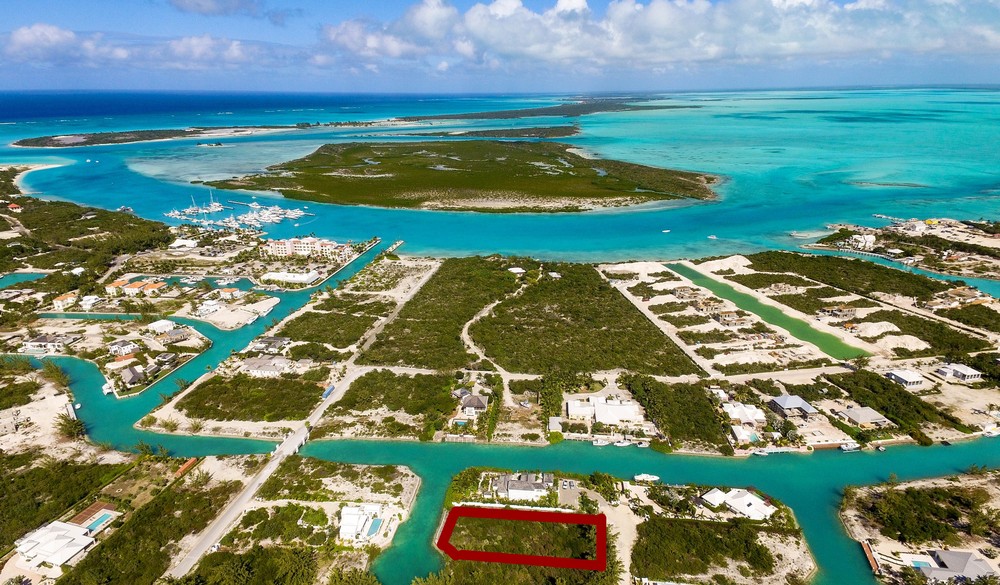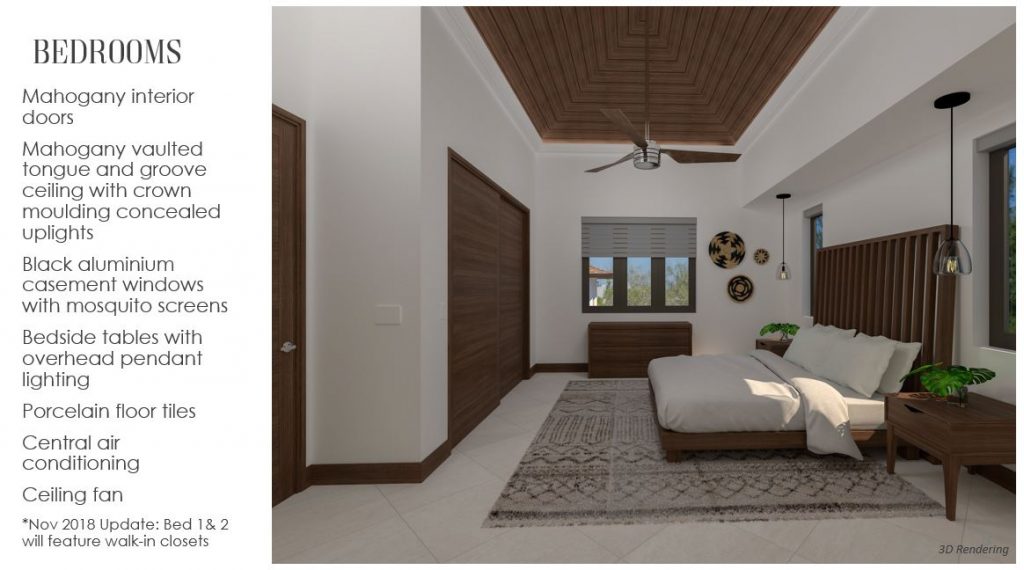
Khaya aeriel view of land parcel in proximity to the leeward channel and open ocean
After designing Fleur de Lys, Acajou, and Cotton House, all homes of traditional Caribbean architecture and interiors, our time to build contemporary Caribbean has finally come. Millworks have always been a distinguishing factor in our builds, and Khaya will be no different. Our primary business, TC Millwork, will be providing all of the woodworks; cabinetry, interior and exterior doors, and built-in furniture. Millworks will primarily be built of African Mahogany, or Khaya, a genus of seven species of trees in the mahogany family and hence the name of the home. Native stone will be another key feature within the interiors, balancing the sleek dark wood with brightness and texture. Read more about the unique location and benefits below.

Khaya aerial view of land parcel
Leeward WATERFRONT LIVING OPPORTUNITY
This contemporary pre-construction home lies on a west facing canal lot in the prestigious Leeward development on the northeast point of Providenciales. Well reputed as one of the most affluent, safe, and attractive neighborhoods, the home is walking distance to the International School and Blue Haven Marina and amenities. Only a short distance drive to Leeward Highway, the location is well appointed for either full time residents or short term visitors. With 101’ft of canal frontage to the west, 5 minute access to the Leeward channel to the North, and a flamingo frequented wetland to the south (pictured below), this parcel is a water lovers paradise.


Khaya great room; kitchen, dining, and living
The home will showcase local materials, native stone feature walls and indigenous landscaping. Mahogany doors, ceilings, custom cabinetry and interior design to be provided by TC Millwork Ltd. Quality local contractors will complete the project, scheduled to complete in spring of 2019. With close proximity to the best yachting, diving and island hopping, the home is minutes to world famous beaches via boat. Leewards waterfront properties maintain excellent value and are becoming increasingly scarce opportunities.

Khaya Bath 2 Render

Khaya Bedroom 1 Render
This pre-construction offer benefits the buyer with considerable savings on stamp duty (paid on land only), a monthly or quarterly payment schedule governed by construction progress, as well as the potential to personalize the interiors and landscaping design.

Khaya Exterior

Khaya Floor Plan
To view the listing, please visit Turks & Caicos Property.





